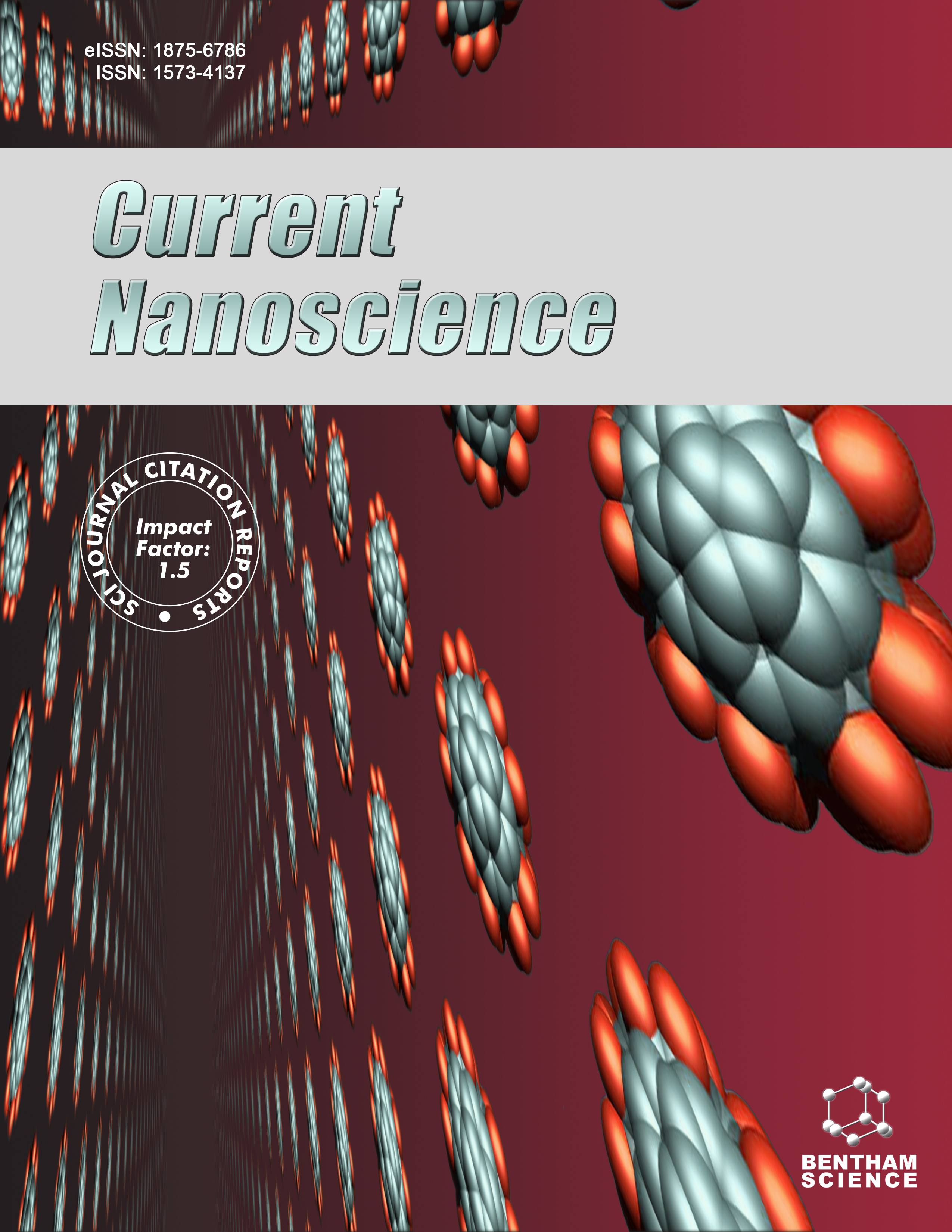- Home
- A-Z Publications
- Current Nanoscience
- Previous Issues
- Volume 1, Issue 3, 2005
Current Nanoscience - Volume 1, Issue 3, 2005
Volume 1, Issue 3, 2005
-
-
Nanomedicine
More LessAuthors: Dwaine F. Emerich and Christopher G. ThanosNanotechnology is a multidisciplinary scientific field with roots in medicine, communications, genomics, and robotics. Miniaturization provides cost effective and more rapidly functioning mechanical, chemical and biological components. But nanometer sized objects also possess self-ordering and assembly behaviors quite different from larger macro objects that when understood and harnessed will dramatically enhance the q Read More
-
-
-
Place of Nanofiltration for Assuring Viral Safety of Biologicals
More LessAuthors: T. Burnouf, M. Radosevich, H. A. Goubran and H. WillkommenViruses are nanometer size organisms (range from 18 to 250 nm) that can potentially contaminate the feedstocks from animal or human origins used to manufacture biopharmaceutical products. Various measures are taken to ensure the optimal viral safety of this class of products. Selection and screening of starting materials play an important role in safeguarding from the introduction of viruses into the downstream processi Read More
-
-
-
Drug Delivery Across the Blood-Brain Barrier
More LessAuthors: Anika M.S. Hartz, Bjorn Bauer, Carsten H. Baehr, David S. Miller and Gert FrickerThe blood brain barrier, formed by brain capillary endothelial cells, represents the major obstacle for drug entry into the central nervous system. Efforts are ongoing to overcome this barrier without causing permanent damage to brain tissue. The present review attempts to provide key information on cerebral microvessel anatomy, features contributing to barrier function and current approaches in overcoming the blood Read More
-
-
-
Nanofocusing Devices Development and Nano-Medicine
More LessOptical nano-phenomena are defined in the field of nanotechnology for nano-metric architectures and nanostructural devices. A short mini-review of the latest books is presented. The definitions of nano-photonics and nanofocusing are determined. An integrated optical scheme of the obtained near-field nanofocusing probe is discussed. Optical aspects of the nanofocusing recording probes are examined. Aberration conditions o Read More
-
-
-
Small Neuroscience: The Nanostructure of the Central Nervous System and Emerging Nanotechnology Applications
More LessThe design and application of bionanotechnologies aimed at the central nervous system (CNS) provide powerful new approaches for studying cell and molecular biology and physiology. Emerging clinically oriented bionanotechnologies are targeting CNS pathologies such as trauma or degenerative events. The successful and meaningful development of bionanotechnologies designed to interact with the CNS as research Read More
-
-
-
Nanoparticle Formulation Increases Oral Bioavailability of Poorly Soluble Drugs: Approaches, Experimental Evidences and Theory
More LessBy Lee JiaThe increasing frequency at which poorly soluble new chemical entities are being discovered raises concerns in the pharmaceutical industry about drugability associated with erratic dissolution and low bioavailability of these hydrophobic compounds. Nanonization provides a plausible pharmaceutical basis for enhancing oral bioavailability and therapeutic effectiveness of these compounds by increasing their surface ar Read More
-
-
-
Nano-Patterning in Polymeric Materials and Biological Objects Using Atomic Force Microscopy Electrostatic Nanolithography
More LessIn this article we are concerned with several aspects related to atomic force microscopy electrostatic nanolithography (AFMEN). AFMEN technique is based on manipulation of nano-amounts of dielectric materials in strong 10 8 - 10 10 Vm-1 electric field. In polymer films of different physical-chemical properties AFMEN produces erasable nanostructures that are 10-300 nm in diameter and 0.5-20 nm in height through Joule he Read More
-
-
-
Fullerene-like Nanoparticles of Titanium Disulfide
More LessTiS2 nanoparticles with nested fullerene-like structure (IF) 60-120 nm in size consisting of up to 100 concentric molecular layers and having quite a perfectly spherical shape were obtained by reacting TiCl4 and H2S using first a horizontal and subsequently a vertical reactor. The proposed growth mechanism of these nanoparticles, i.e. nucleation and growth, is radically different from the one proposed for the growth of the fulleren Read More
-
-
-
Global Governmental Investment in Nanotechnologies
More LessBy Lee JiaNanotechnologies seem to have huge potential to bring benefits in areas as diverse as drug development, water decontamination, information and communication infrastructures, and the production of stronger, lighter and perfect nanomaterials. This potential attracts global investment from governments and private sectors in nanotechnologies with the hopes that R and commercial applications of nanomaterials, nanodevices Read More
-
Volumes & issues
-
Volume 21 (2025)
-
Volume 20 (2024)
-
Volume 19 (2023)
-
Volume 18 (2022)
-
Volume 17 (2021)
-
Volume 16 (2020)
-
Volume 15 (2019)
-
Volume 14 (2018)
-
Volume 13 (2017)
-
Volume 12 (2016)
-
Volume 11 (2015)
-
Volume 10 (2014)
-
Volume 9 (2013)
-
Volume 8 (2012)
-
Volume 7 (2011)
-
Volume 6 (2010)
-
Volume 5 (2009)
-
Volume 4 (2008)
-
Volume 3 (2007)
-
Volume 2 (2006)
-
Volume 1 (2005)
Most Read This Month
Article
content/journals/cnano
Journal
10
5
false
en


